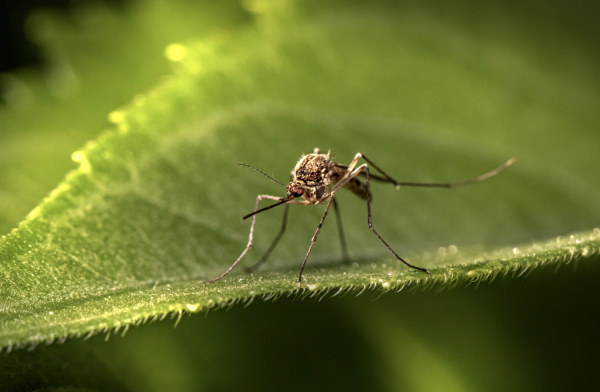What can we learn from 1918?
How is the big influenza pandemic like and unlike our current pandemic?
There are many similarities, but also significant differences between the 1918 Flu pandemic and the 2020 Covid pandemic.
COVID-19 has disrupted our lives over the past two years, but is the situation finally improving? A look into a similar 1918 influenza pandemic will help us predict what is coming next with COVID-19.
The first public reports of flu cases were in Madrid, Spain, on May 22, 1918; From that day forward, the Influenza would infect about a third of the world’s total population at the time, approximately 500 million people.The Influenza has come a long way from its deadly beginnings, and it is now preventable through an annual flu shot. In comparison, COVID-19 was first recognized in China’s Hubei Province on December 12, 2019, and since then it has since spread across the world and taken upwards of 6 million lives. The Influenza has come a long way from its deadly beginnings, and it is now preventable through an annual flu shot. COVID-19 and the 1918 Influenza pandemic share many similarities, so by comparing the two pandemics we can get a glimpse of the future for COVID-19.
In the early 20th century, the Influenza infected 500 million people, and it killed about 50 million people. The Influenza spreads through tiny droplets passed between people by talking, coughing, or sneezing. The Influenza was incredibly contagious and spread rapidly around the world, reaching parts of Russia, Africa, Asia, and New Zealand. The virus was also recurring, and came in four main waves. The first wave was from February 15, 1918, to June 1, 1918. During this time, the deaths were similar to that of a normal flu season, and the virus began to die down after a while. The Influenza was at its most lethal during its second wave. The disease infected people between the ages of 20-40. Then they often developed pneumonia and would die within a few days of contracting the flu. The third wave still claimed many lives, although it was less virulent than the second, and then the fourth wave, in winter 1920, was the last of the Influenza to be notable.
In comparison, COVID-19 has followed its own path since its beginnings in Hubei, China. The disease spread to 114 or more countries worldwide in months, and on March 11, 2020, the World Health Organization (WHO) declared it a pandemic. COVID-19 infections continued to increase, and increasingly contagious variants sprung up across the globe, creating waves similar to the course of the Influenza. such as Alpha, Beta, Delta, and Omicron. Each variant comes with varying levels of severity and contagiousness. Estimates show that the Alpha variant is 30% to 50% more contagious than the original coronavirus strands. However, Delta is estimated to be 80% to 90% more spreadable than the Alpha variant. Recent studies suggest Omicron is 4.2 times more transmissible than Delta early on. As of late, Omicron has become the most common strain of COVID-19. Omicron demonstrates how COVID-19 can develop to be less deadly, but more contagious. Slowly, but surely, we can start guessing that COVID-19 is heading in a better direction.
A sSide by side comparisons of COVID-19 to the 1918 Influenza is easier said than done. Proportionally, it is hard to compare the mortality rates of each virus due to different circumstances and varying numbers in population. COVID-19 primarily affects those over the age of 65 or people with weakened immune systems and/or underlying conditions. In comparison, the Influenza killed many otherwise healthy people between 25 and 40. In general, comparing death rates between the two pandemics is difficult. Critical to A couple of critical things to remember about Influenza is that it mainly attacked young adults during a time when World War I was coming to an end. The spread of military ships loaded with young men from the navy or returning troops spread the flu worldwide in months. As of August 2022, there have been about 595 million confirmed COVID-19 cases. There have been 6.64 million deaths. Another thing to consider is how the population in the early 20th century of about 1.8 billion people is far less than today’s 8.0 billion people.
COVID-19 and Influenza also share many similarities, not just in virus characteristics, but also in their outcomes. Throughout the 1918 pandemic, as populations died and the spread of the Influenza did not cease, many other things had to be sacrificed. Public Leaders shut down theaters, concerts, and schools to prevent the disease from infecting and killing more people. City life died out, and once busy streets bamce empty. Hospital beds were outnumbered by the sick, and nurses were overworked; there were insufficient coffins to keep up with the dying.
COVID-19 and the Influenza pandemics were devastating. So,, so what can we learn about how the Influenza ended, and what can we predict for COVID-19? When did the 1918 Influenza end? To put it simply, it did not. In 1957 a new variation of Influenza emerged. It evolved in East Asia and gained the not-so-clever name of “Asian Flu.” It was a minimal pandemic, with the estimated number of deaths at 1.1 million worldwide. There is only speculation on how it emerged. This variant of Influenza would replace the variant that caused the 1918’s pandemic. In 1960, the U.S. Public Health Service distributed and recommended the first vaccinations for the flu to those at risk of flu complications. In July 2011, another variant of Influenza emerged. Also called “Influenza A” or “Swine Flu,” the flu is primarily found in pigs. Multiple variants based on this version exist, and lots of Influenza diseases are found in animals.
We already see how COVID-19 is developing. Although newly-developed variants are more contagious than the original strain of COVID-19, studies show that they are less deadly as they continue to evolve. For example, reports of the Alpha and Beta variants show that they are highly contagious and severely deadly to those who were not vaccinated. Later on, variants like Delta and Omicron proved to have more breakthrough cases but, in any case, proved less deadly to those vaccinated.
So, instead of asking, “When will the coronavirus go away?” A better question is, “When will the coronavirus evolve?” It takes time and development to handle viruses; they do not just disappear. Influenza has evolved. Today, we have flu seasons and vaccinations to handle them. That all started with one of the deadliest outbreaks known to humanity. It is best to hope that as the coronavirus disease evolves, we will also evolve; after all, we already have survived the Influenza.












